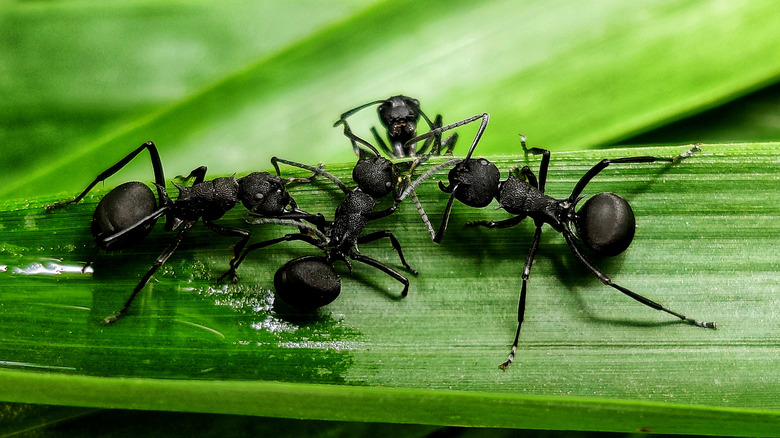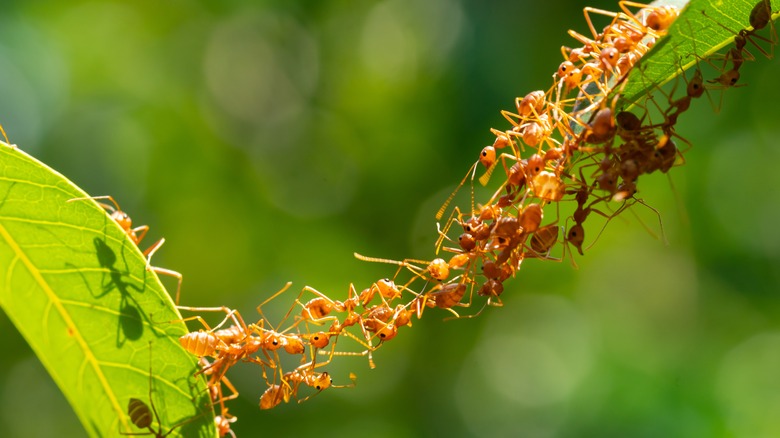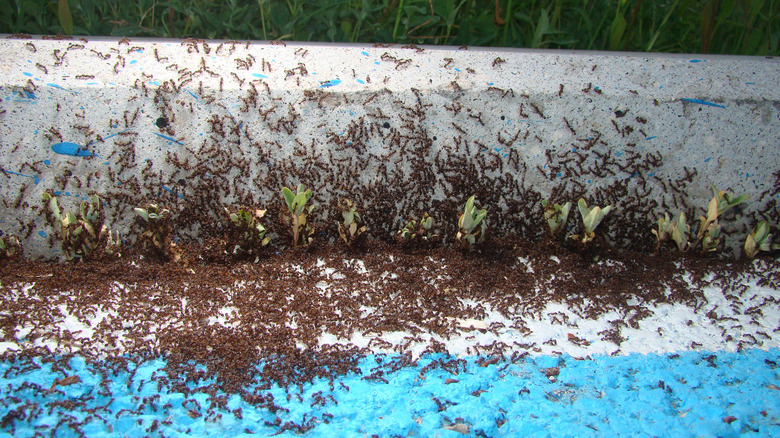Scientists' Estimation On The Size Of The Ant Population Shouldn't Actually Be A Surprise At All
Earth's population is growing at an astonishing rate. As CNN reported in July of 2019, it exceeded 5 billion people in 1987 and is expected to reach around 9.7 billion by 2050.
The various troubles this rising number may cause notwithstanding, "population" doesn't simply relate to the number of humans. After all, we share this world with all manner of creatures great and small. We don't share it very well, though, sadly: the WWF reports that the rate of extinction of species is up to 10,000 faster than would be natural, and we're surely playing a substantial and tragic part in that.
Though humanity is certainly one of the most prolific and influential species on Earth, it isn't the most numerous. Humble ants outnumber us to a dizzying degree. Of course, anyone who has left food unattended outdoors for more than two seconds will probably know this, but the sheer numbers involved are mind-boggling.
Ants certainly aren't a threatened species
The IUCN Red List Of Threatened Species demonstrates the scope of the peril that the world's species are facing. According to this somber resource, over one quarter of every species it assesses is at risk of extinction (around 41,000 of them). This includes such magnificent creatures as the Yangtze Giant Softshell Turtle and the Slender-snouted Crocodile.
The silver lining, of course, is that some species, thanks to tireless conservation efforts, are able to stabilize and recover. Still others, of course, are so numerous that no such intervention has been required.
Many of these, you may not be surprised or delighted to learn, are of the creepy-crawly variety. Those ubiquitous picnic party-crashers, the ants, are among the most plentiful creatures on Earth. New research, CNN reports, states that it's all but impossible to determine how many ants there are on the planet. The experts concluded, however, that the approximate totals involve numbers that some of us may not even know existed.
Of quadrillions and quintrillions
The study in question is "The abundance, biomass, and distribution of ants on Earth," which was published in September 2022 by Patrick Schultheiss et al (via PNAS). To arrive at an approximate number, the scientists report, they considered data from almost 500 studies on the subject and considered the huge yet "uneven" spread of ants around the world. The goal, the study reports, was to "compile data on ground-dwelling and arboreal ants to obtain an empirical estimate of global ant abundance."
Abundance, quite clearly, is the operative word here. With the scope of the problem, the difficulty of any sort of true accuracy and the concession that this would be a rough estimate in mind, the study places the global ant population at around 20 quadrillion. Their total biomass, it seems, would be around 12 megatons. "This exceeds the combined biomass of wild birds and mammals and equals 20% of human biomass," the study states, which is a frightening thought indeed.
A quadrillion, according to Merriam-Webster, is "a number equal to 1 followed by 15 zeroes." Now that is a tremendous number of ants.
Insect fans, though, are surely wondering how many creepy-crawlies, in general, there are on Earth. Well, Smithsonian has an approximate number for that. According to the outlet, insects account for four-fifths of animal life on Earth, and "... at any time, it is estimated that there are some 10 quintillion (10,000,000,000,000,000,000) individual insects alive."


